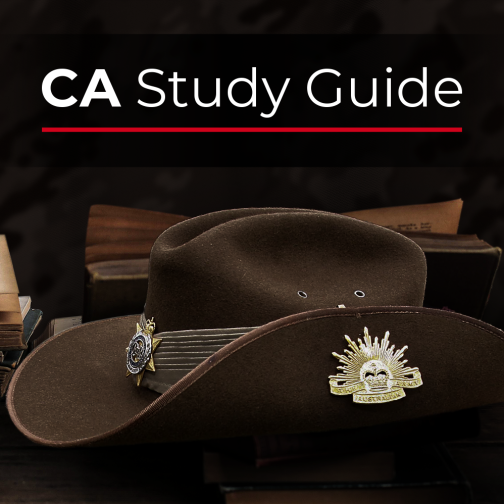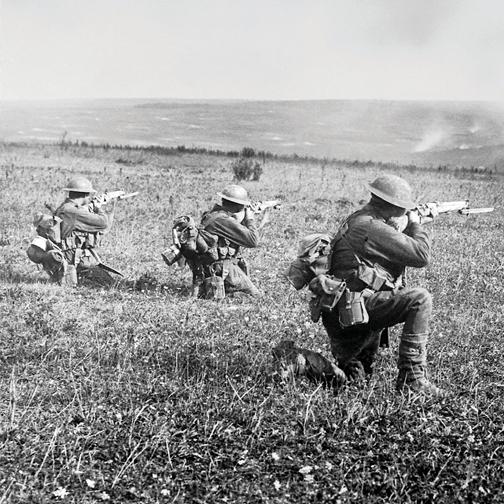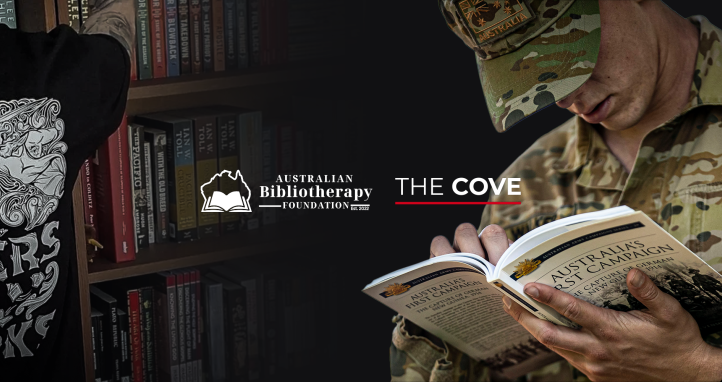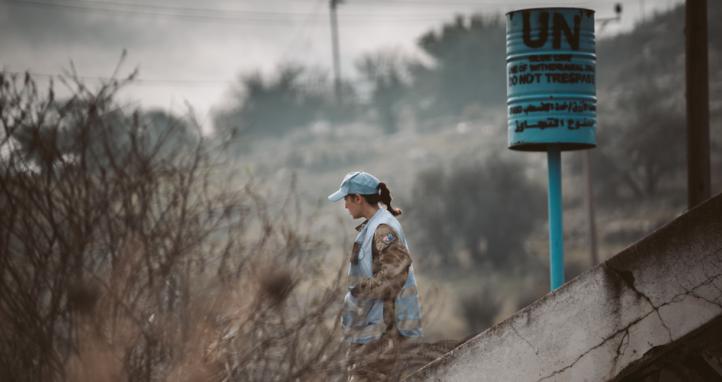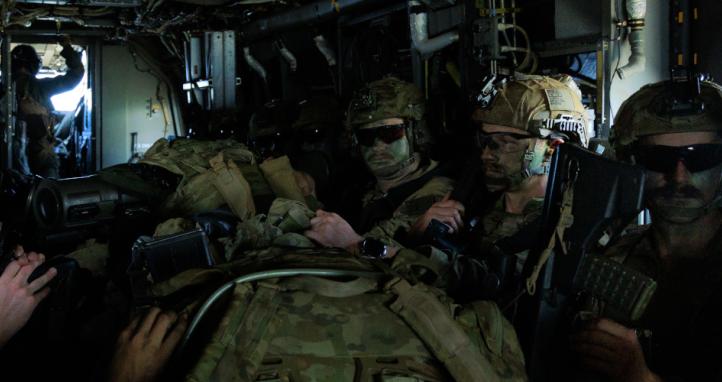
Corporal Reginald Roy Inwood VC (1890-1971, 81yo)
Roy Inwood was born in Adelaide, South Australia, on 14 July 1890. Following his schooling, he worked as a miner in Broken Hill. He enlisted in the Australian Imperial Force in August 1914 and was posted to the 10th Battalion.
Deployed to Gallipoli, Inwood remained there until November 1915. Although promoted to Lance Corporal in August, he was demoted to Private two months later for being Absent Without Leave. By 1916, his unit was operating on the Western Front in France.
In September 1917, during the battle of Menin Road near Polygon Wood, Inwood distinguished himself through a series of bold and independent actions. Advancing ahead of his unit, he crossed through his own side’s artillery barrage and single-handedly assaulted a fortified enemy post, killing several defenders and capturing nine. That same night, he volunteered for a long-range reconnaissance patrol, gathering valuable intelligence. The following morning, he located and attacked a machine-gun position alone, killing its crew and bringing back the lone survivor along with the weapon.
Although later reports clarified that he had brief assistance during the initial assault, Inwood's determination and courage earned him the Victoria Cross for "most conspicuous bravery and devotion to duty." He was promoted to Corporal the following month and later advanced to Sergeant.
After serving with the 10th Battalion until May 1918, Inwood returned to Australia and was demobilised in December. He died on 23 October 1971 and was buried with full military honours at West Terrace Cemetery. His Victoria Cross is displayed in the Adelaide City Council chambers, and the Other Ranks Mess of the 10th Battalion bears his name—the Roy Inwood Club.

Captain Albert Jacka VC, MC and Bar (1893-1932, 39yo)
Albert Jacka, born on 10 January 1893 in Layard, Victoria, began working at a young age—first alongside his father as a labourer and later for the Victorian State Forests Department. In the early months of the First World War, he enlisted in the Australian Imperial Force on 18 September 1914 and was posted to the 14th Battalion.
After training in Egypt, Jacka landed at Gallipoli on 26 April 1915. Less than a month later, he found himself at the centre of one of the campaign’s most dramatic moments. On 19 May, during a fierce Turkish counter-attack, a section of the front line at Courtney’s Post was overrun. Jacka, positioned at one end of the captured trench, held his ground and initially fired warning shots to stall the advance. When backup arrived, he led an assault into the trench, but his companions were immediately struck down. Alone, Jacka circled around and stormed the position, killing seven enemy soldiers and forcing the rest to flee. The daring counter-attack earned him the first Victoria Cross awarded to the AIF during the war.
His actions made him a household name in Australia. Public recognition followed, including a monetary reward and a gold watch from Melbourne entrepreneur John Wren. Promotions came rapidly—by November 1915, Jacka had risen to Company Sergeant Major, and after officer training, he was commissioned as a Second Lieutenant in April 1916.
Sent to the Western Front in mid-1916, Jacka again distinguished himself during the battle of Pozières in August. As German forces breached the line, he emerged from his dugout amid chaos, spotted dozens of Australians being taken prisoner, and immediately launched a counter-charge. His bold intervention sparked a melee in which the captured Australians turned on their captors. Jacka was seriously wounded, but the German position was retaken and 50 prisoners secured. For this, he was awarded the Military Cross. Official historian Charles Bean would later describe the scene as the most extraordinary single act of bravery in the war.
Despite being gravely wounded, Jacka returned to active duty, promoted to Captain and made the battalion’s intelligence officer. In April 1917, during preparations for an assault near Bullecourt, he led a night reconnaissance to map enemy defences. When two German soldiers stumbled upon the operation, Jacka—his pistol misfiring—subdued them barehanded to avoid alerting enemy forces. This swift thinking earned him a Bar to his Military Cross.
He was later wounded by a sniper and severely gassed at Villers-Bretonneux in 1918, which ended his frontline service. Jacka survived the war but never fully recovered from his injuries.
He died on 18 December 1931 at Caulfield Military Hospital. His funeral drew thousands—over 6,000 people paid their respects as he lay in state, and more than 1,000 veterans joined the procession to St Kilda Cemetery. Though his blunt manner may have limited further advancement, Jacka's fearlessness and integrity made him a legend. As one friend put it, "He said what he meant, and meant what he said."

Corporal John William Alexander Jackson VC (1897-1959, 62yo)
William Jackson was just 18 years old when he performed an extraordinary act of bravery that would make him the youngest Australian recipient of the Victoria Cross during the First World War. Born on 13 September 1897 in Ganbar, New South Wales, Jackson left school and began working at Calowrie before enlisting in the Australian Imperial Force on 20 February 1915. He was posted to the 17th Battalion.
After initial training in Egypt, Jackson landed at Gallipoli in August 1915 and was thrust into combat at Hill 60. His service was cut short by illness—dysentery forced his evacuation in October—but he returned to his unit in March 1916, just as the battalion was bound for the Western Front in France.
In June that year, the 17th Battalion prepared to raid German trenches near Bois Grenier. Jackson volunteered. On the night of 25 June, under a curtain of artillery fire, the raiding party of fewer than 100 men advanced on enemy positions held by the 231st Prussian Reserve Infantry. As part of the scout group, Jackson helped clear enemy listening posts and guided the main force into the trenches. The Australians encountered minimal resistance, but as they began to withdraw, German artillery fire intensified.
During the chaotic retreat, Jackson brought back a prisoner, then returned to carry out a wounded comrade. On his third trip, while helping a Sergeant evacuate another injured soldier, a shell exploded nearby. Jackson’s right arm was destroyed, and the Sergeant was knocked unconscious. In excruciating pain, Jackson went for help and returned once more to assist in the rescue—an astonishing act of resilience and selflessness.
He was initially recommended for the Distinguished Conduct Medal, but this was later revoked in favour of a higher honour: the Victoria Cross. His citation praised his "splendid example of pluck and determination" and described his actions as a model of bravery.
After his evacuation, Jackson’s arm was amputated. He was sent home in May 1917 and discharged later that year. Despite his injuries, he remained engaged with the veteran community, and in 1956 he travelled to London for the centenary of the Victoria Cross.
Jackson died on 4 August 1959 at the Austin Hospital in Heidelberg, Melbourne, from arteriosclerotic heart disease. He was cremated, survived by his daughter. Though his life was shaped by the trauma of war, Jackson’s name endures as a symbol of youth, courage, and sacrifice on the battlefields of France.
Last Reviewed 06/2025

